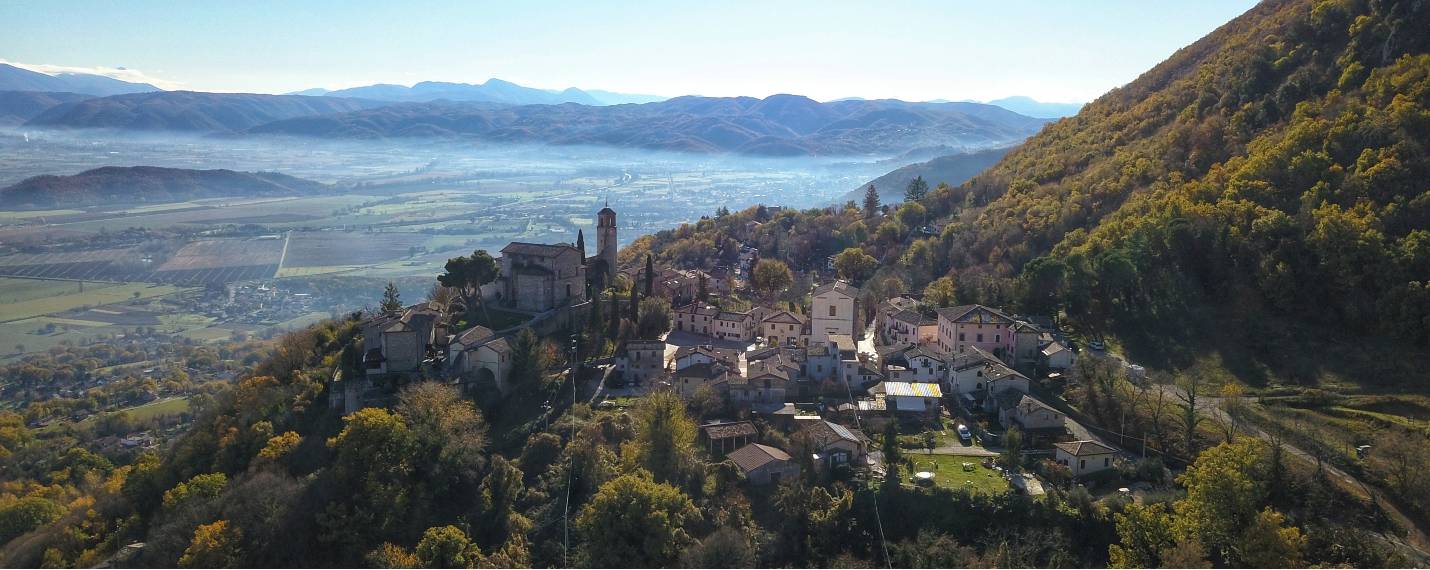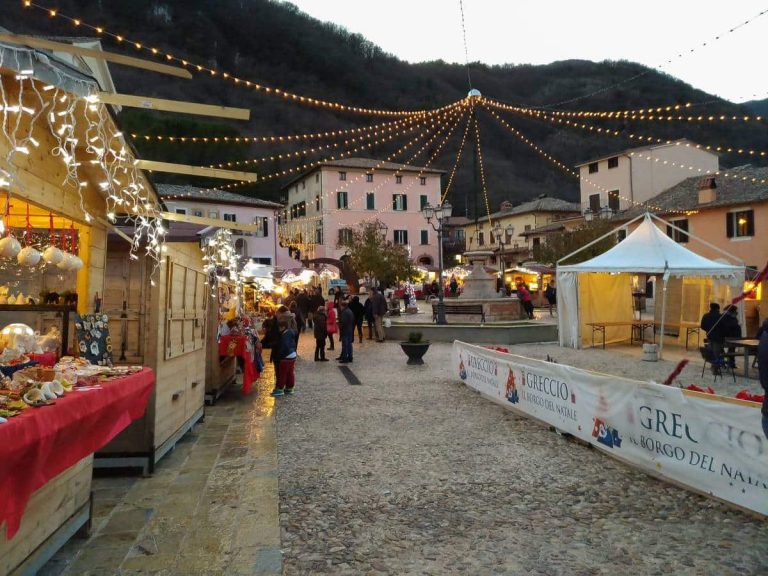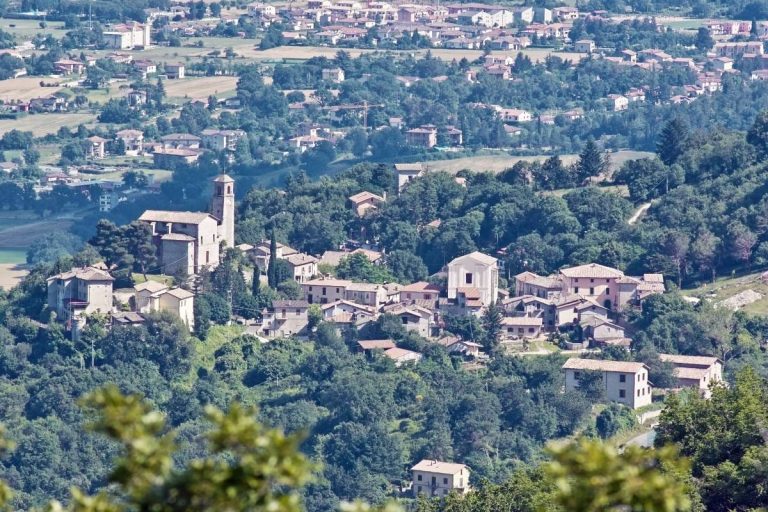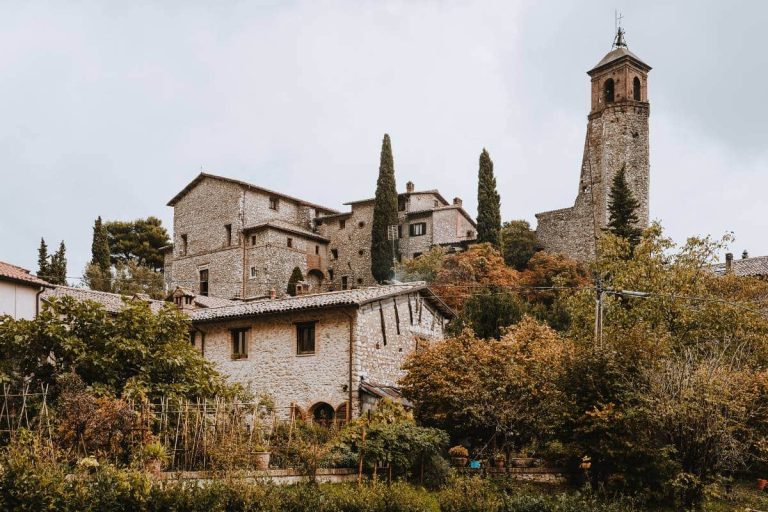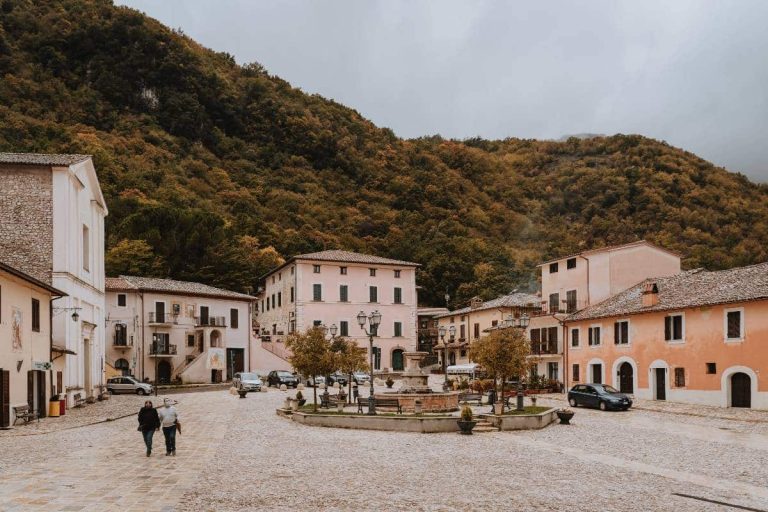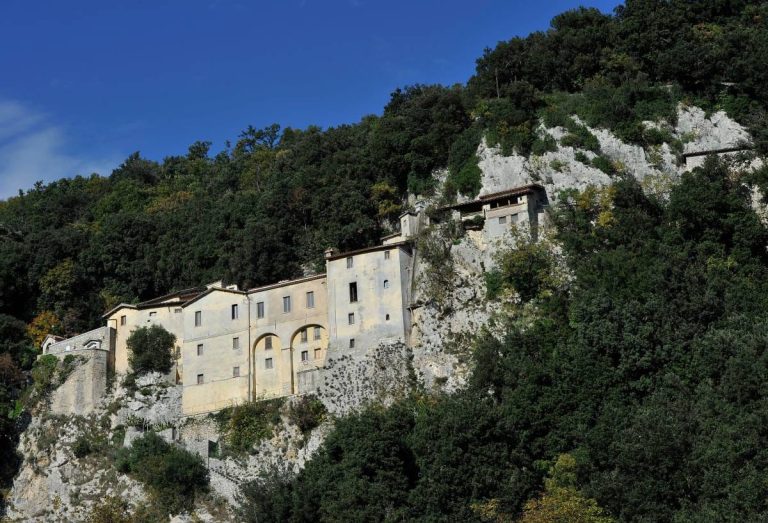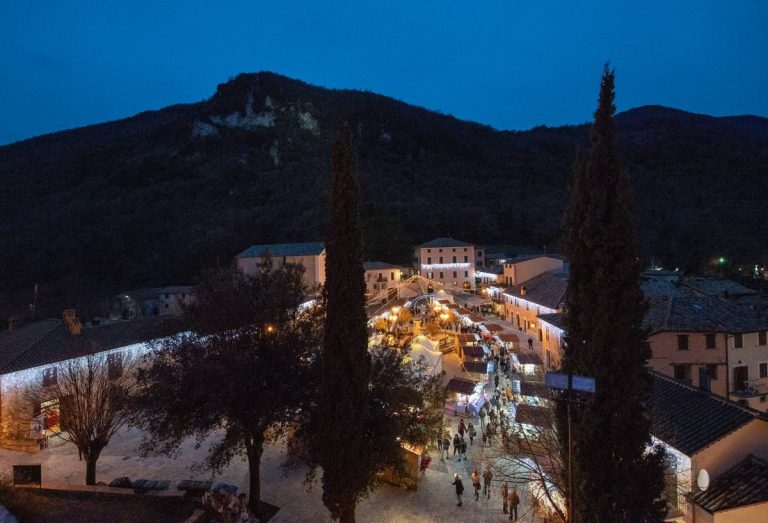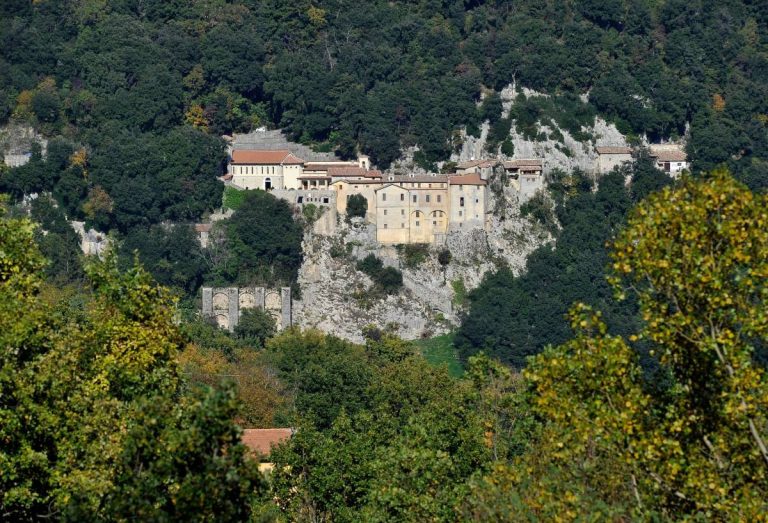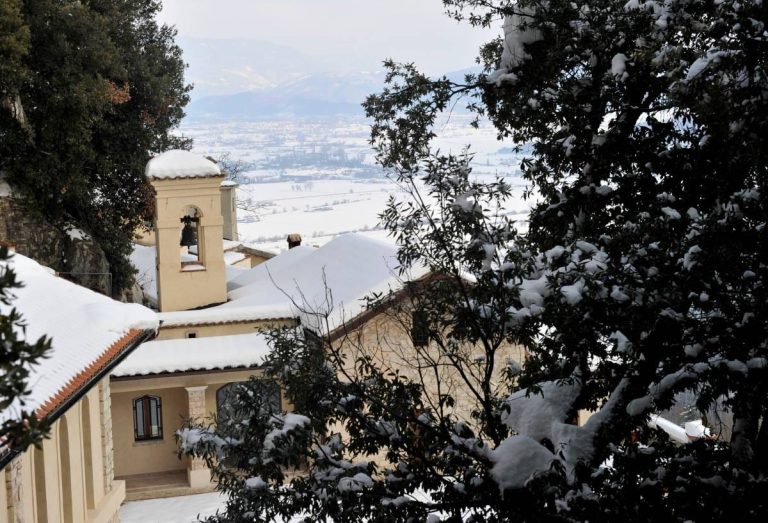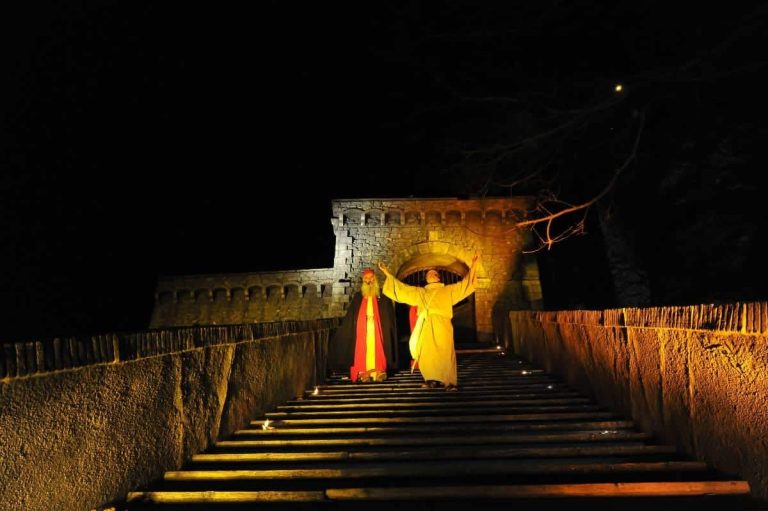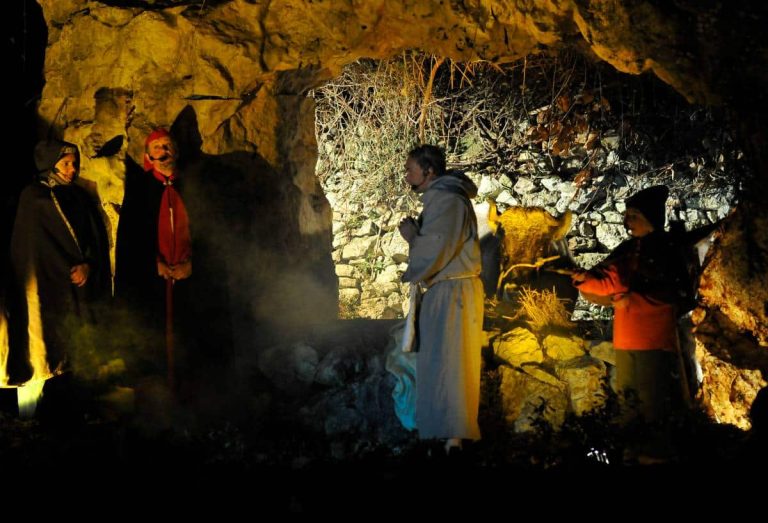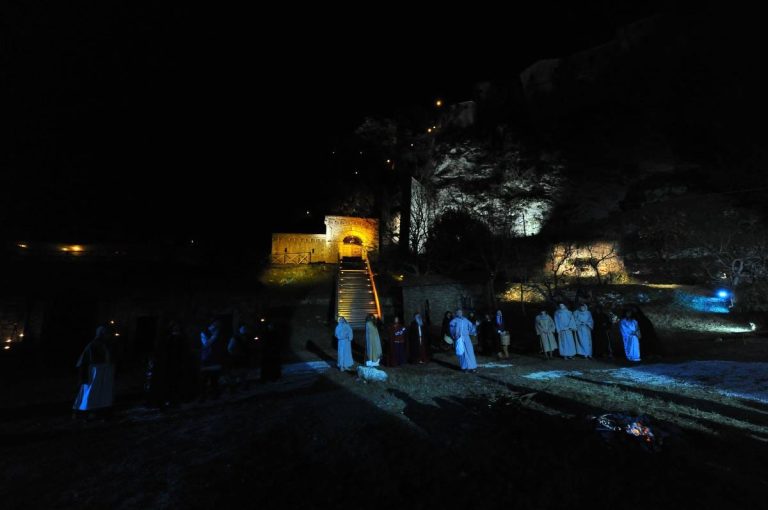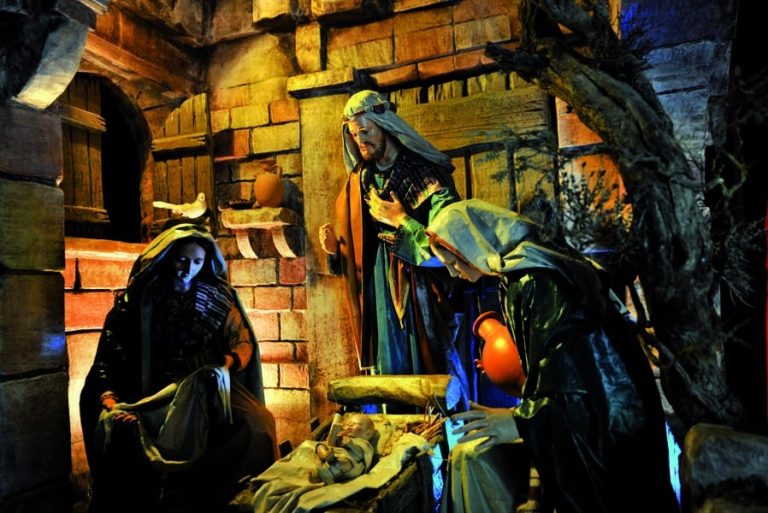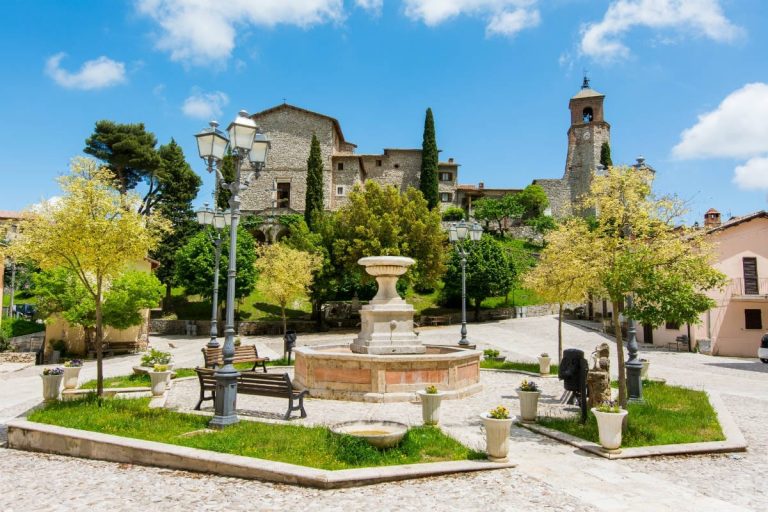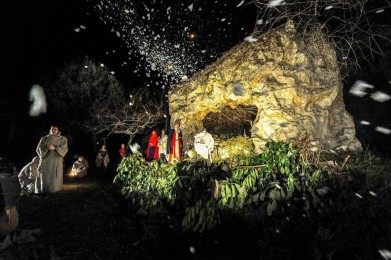A small village located in the province of Rieti, Greccio offers visitors a range of natural beauty and a very intense artistic and cultural heritage. It is a very particular place, so much so that it was able to kidnap even the heart of St. Francis of Assisi, who decided to found a sanctuary right here, which became famous because it was there that the first crib saw the light.
In addition to its deep religious significance, Greccio can be considered a real pearl. Here, traditions and popular folklore mix together, taking a step back in time and bringing back to light ancient flavours.
The first thing that will strike visitors who come to Greccio is undoubtedly the uncontaminated nature that surrounds the village, formed by so much greenery and fascinating paths that wind through the woods.
Besides the Sanctuary of San Francesco, in Greccio there are numerous testimonies of a glorious past, made visible by the majestic castle. However, the origins of the village are even more ancient. Its name, in fact, according to tradition, is linked to the arrival of a Greek colony. According to the legend, people fleeing from war, hunger and destruction, found in Greccio the ideal place to settle, between the tranquillity of the landscape and the strategic position that facilitated the defence.
During the Middle Ages the village was fortified, so much so that even today it still has that traditional charm, despite the plundering and destruction that struck it from Frederick II to the Napoleonic army. In spite of this, in the castle still remains a part of the ancient floor and the three towers remember the ancient use of the structure as a fortress. From the 17th century the highest tower was transformed into a bell tower, since it is adjacent to the Church of San Michele Arcangelo.
The structure, dating back to the 14th century, was obtained from a part of the old castle. Over the centuries it was destroyed and rebuilt several times but still today inside it there are still several frescoes and works of art dating back to the 15th and 17th centuries.
For trekking lovers, Greccio offers numerous itineraries that wind through the paths that surround the village. The Saint Francis Walk retraces the steps of the monk between the plain of the Vale Santa in an evocative setting made up of gentle hills interspersed with harsher mountainous reliefs. The walk towards Fonte Lupetta is as evocative as it is fascinating and allows you to reach the ancient water source to which the legend of the wolf mated by Saint Francis is linked. This water, moreover, seems to have fantastic beneficial and diuretic properties.
Absolutely not to be missed is the Nativity Museum, also known as the Nativity Museum, located in the church of Santa Maria. Inside you can admire nativity scenes from different cultures. The space is open every day and can be visited by purchasing a ticket.
During the Christmas period, Greccio hosts a delicious Christmas market and especially the ancient art of the crib. Visiting it offers the opportunity to get in touch with local craftsmen and relive traditions of the past with the crib, symbol of Greccio, as protagonist. Not to be missed every year just after Christmas, the representation of the Living Nativity scene.
The gastronomic tradition of Greccio is based on simple and genuine ingredients, with dishes rich in taste.
In autumn the pumpkin is the absolute protagonist for sweet dishes such as cakes and biscuits and for excellent velvety dishes accompanied by homemade toasted bread and pecorino cheese. Winter is the time for warm and full-bodied dishes such as soups prepared with local mushrooms and vegetables or homemade pasta stuffed with meat. In spring, Greccio's cuisine becomes an explosion of colour with fresh seasonal vegetables, served steamed or used to prepare delicate velvety dishes such as carrots and artichokes. Finally, summer is the season of panzanella made with fresh tomatoes and basil, to be eaten as a single dish or as a tasty aperitif.

